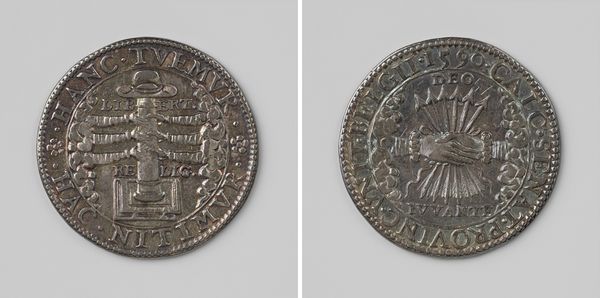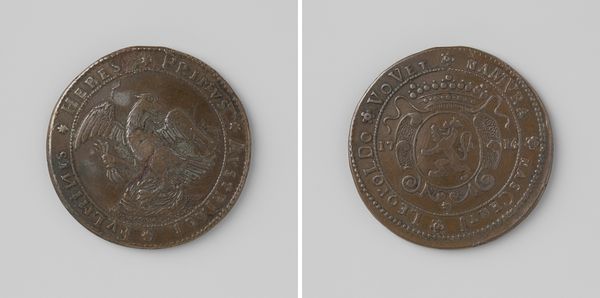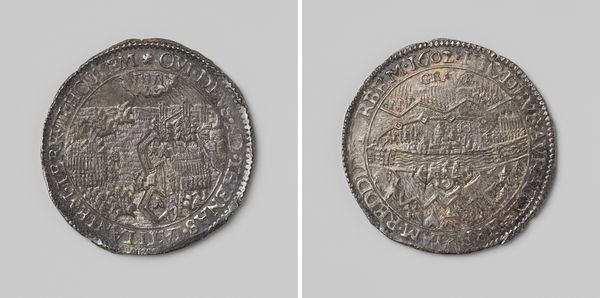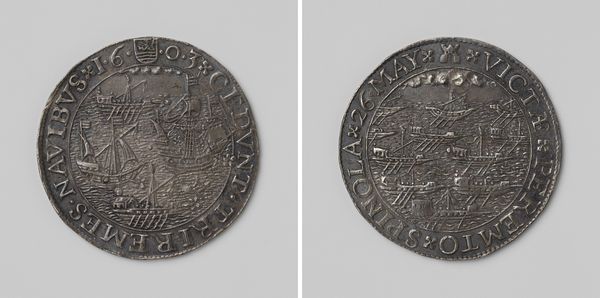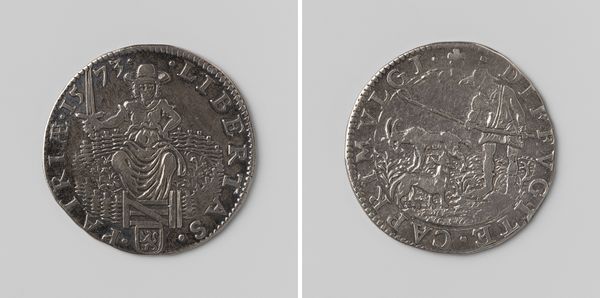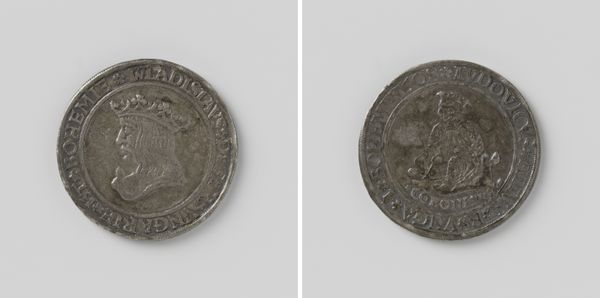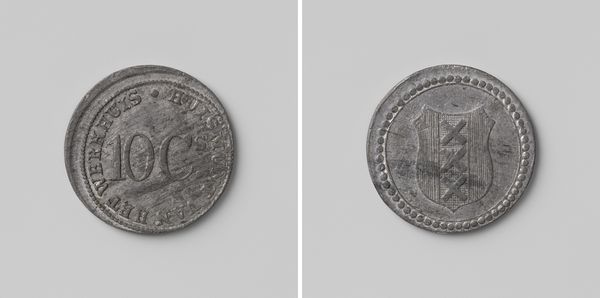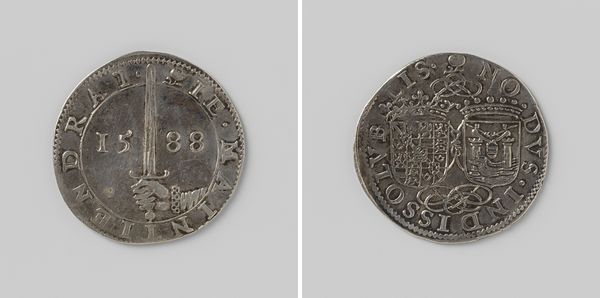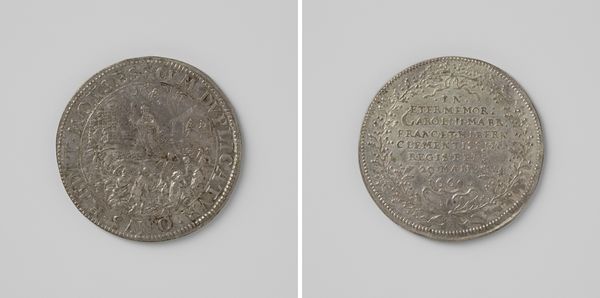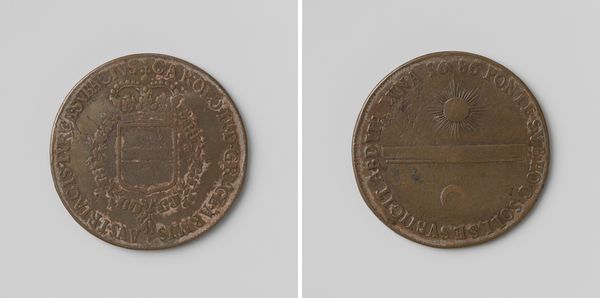
print, metal, relief, engraving
#
portrait
# print
#
metal
#
relief
#
11_renaissance
#
history-painting
#
engraving
Dimensions: diameter 2.9 cm, weight 5.57 gr
Copyright: Rijks Museum: Open Domain
Curator: This is a fascinating print, an engraving on metal. It's titled "Inname van Geertruidenberg door Maurits, graaf van Nassau" or "The Capture of Geertruidenberg by Maurice, Count of Nassau." It dates back to 1593. Editor: It appears cold. The rigid, symmetrical arrangement of text and the depiction of figures—all cast in grey, gives it an emotionally distant affect. It’s also circular; is this intended to function as a coin? Curator: Exactly. These objects were disseminated not solely as currency, but to document, commemorate, and propagandize critical historic events like this siege. Look closely; its texture is so palpable. The contrast of dark lines on this metallic field conveys incredible depth despite the scale. Editor: The very notion of turning a military siege into a portable object strikes me as deeply problematic, an aestheticizing of conflict. And the deliberate circulation... the message being carefully curated and broadly delivered. Curator: Agreed, that act of selecting what gets memorialized—and how it’s disseminated—is vital to interpreting the symbolism, to understand the public role of imagery here. These choices cement interpretations of history, reflecting very specific ideological positions, correct? But focusing just on the visuals for a moment, notice the division between text and the imagery—one describes, the other depicts. Editor: Indeed, both sides—the text describing the siege and the opposing depiction of the troops moving towards the castle walls, emphasize control, planning. This contrasts starkly with the chaos war typically implies. The text's geometric arrangement creates a framing device; the words almost encircle the images to emphasize both control and the historical capture that they represent. Curator: Precisely! It reminds us that every element—every formal decision made reflects intended, specific meanings. Editor: What begins as an ostensibly straightforward commemorative depiction opens up to deeper contemplation of power, of messaging. It shows how historical events are rendered digestible, if not palatable, to those not directly involved. Curator: These miniature pieces truly make one appreciate how visual decisions echo far beyond just the aesthetics of form. Editor: They remind us that historical narratives are actively built and constantly shifting.
Comments
No comments
Be the first to comment and join the conversation on the ultimate creative platform.

